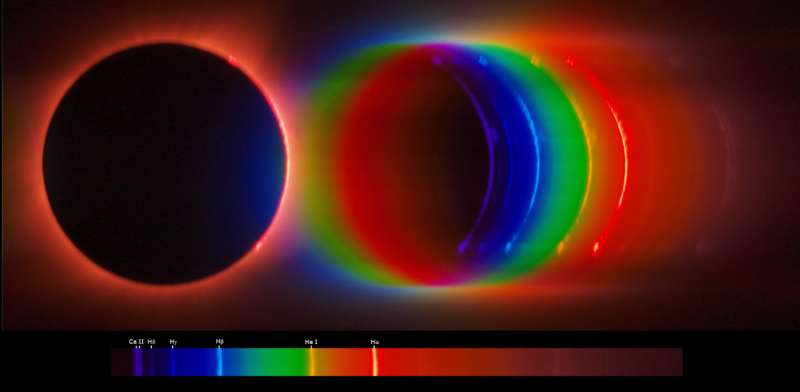Credit: ESA/M. Castillo-Fraile
This colourful image is a 'chromosphere flash spectrum' captured during the total solar eclipse that occurred across the United States on 21 August 2017. It was taken by ESA's expedition team who monitored the eclipse from Casper, Wyoming.
During an eclipse, when the moon temporarily obscures the overwhelming light from the sun's photosphere, astronomers can make unique measurements. This includes analysing the normally invisible red hue of the chromosphere, the layer of the sun's atmosphere directly above the turbulent surface of the photosphere.
Such an image can be obtained with the last and first light of the solar limb just before and after the eclipse totality, respectively, giving rise to the name 'flash' spectrum as the measurements have to be completed in a matter of seconds.
At this moment the sun's emission can be split into a spectrum of colours, showing the fingerprint of different chemical elements.
The flash spectrum shown here was produced by the very first solar limb observable after the totality. The exposure to capture this image was exactly 1/30 s. An image of the eclipsed sun is produced at left and the spectrum of each point of the sun superposed at the right.
The strongest emission is due to hydrogen, including red hydrogen-alpha emission at far right, and blue and purple to the left. In between, the bright yellow corresponds to helium, an element only discovered in a flash spectrum captured during the 18 August 1868 total eclipse, although it was then unknown what it was. Nearly three decades later the element was discovered on Earth and helium is now known to be the second most abundant element in the universe, after hydrogen.
Provided by European Space Agency























